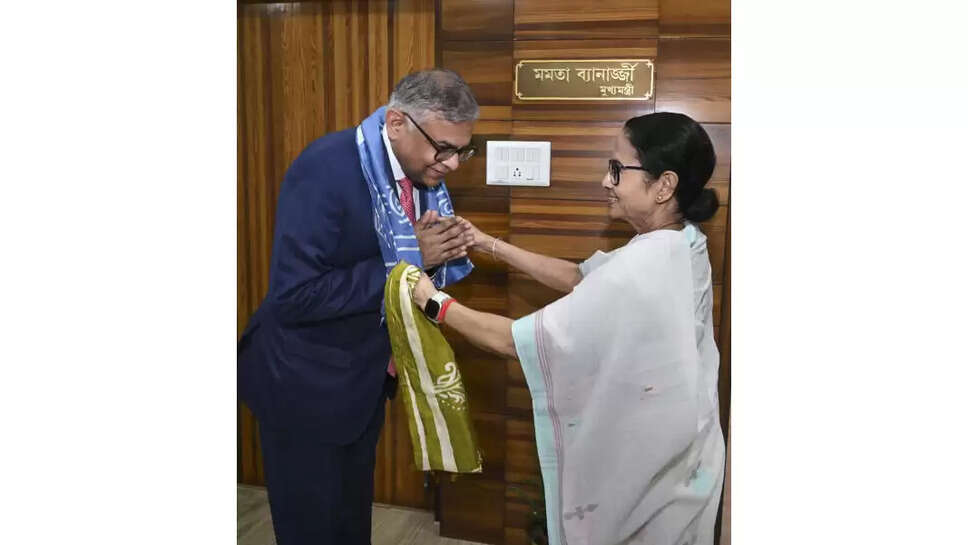From Protest to Progress? Mamata’s Bid to Move Beyond the Nano Episode

The story of Tata Motors' Nano factory and its unceremonious exit from Singur in West Bengal is etched in Indian political history. Once hailed as a victory of farmers’ rights over forced industrialisation, the 2008 Singur movement catapulted Mamata Banerjee and the Trinamool Congress (TMC) to political prominence, eventually unseating the Left Front in 2011 after over three decades in power.
However, nearly two decades later, the same Singur episode has returned to haunt Mamata Banerjee — not from the opposition she once defeated, but from a resurgent BJP. With elections looming and public opinion evolving, the Mamata government is now undertaking a major image reset — one aimed at distancing itself from the baggage of the Nano saga and repositioning West Bengal as a forward-looking industrial state.
Singur: The Flashpoint That Sparked a Political Revolution
In 2006, Tata Motors announced its plans to manufacture the world's cheapest car — the Nano — from Singur, a small agricultural belt in Hooghly district. The Left Front government, eager to attract industry, acquired over 900 acres of fertile farmland for the project, triggering protests from farmers who claimed the land was taken forcibly or under duress.
Mamata Banerjee seized the moment. Camping out in Singur, she spearheaded a months-long agitation, demanding the return of land to unwilling farmers. Her moral positioning as a defender of the agrarian poor resonated widely in rural Bengal, ultimately leading to the withdrawal of Tata Motors in 2008 and her rise to power.
The incident was a landmark in India’s industrial vs agrarian debate, symbolising the conflict between development and displacement.
Rewriting the Legacy
Today, with the BJP positioning itself as the party of industrial growth, Mamata’s once-celebrated role in ousting Tata Motors has become a liability. The BJP has repeatedly weaponised Singur to portray TMC as "anti-industry" and an obstacle to economic development.
To counter this, the Mamata government is actively rebranding the narrative. Singur is no longer just a symbol of resistance — it's now being showcased as a case study in equitable rehabilitation, with a new emphasis on jobs, skill training, and sustainable land use.
From Protest Site to Development Hub
One of the key strategies in Mamata’s image makeover is the transformation of Singur itself. The state government has announced initiatives to turn the area into an "agro-industrial zone," combining agricultural activity with light industry and food processing.
The land that was once contested is now dotted with greenhouses, nurseries, and training centres. Tractors have replaced protest flags. The government has also initiated roadworks, irrigation projects, and a multi-crore farmers’ welfare package to uplift the area and showcase development.
TMC leaders claim this dual-purpose use of the land — blending farming with small-scale industries — represents a “Bengal model” of sustainable development, different from the large-scale corporate takeovers the party once opposed.
Targeting the BJP’s 'Vikas' Pitch
The BJP’s critique of the Mamata government often hinges on the argument that West Bengal has missed out on industrial growth. The Nano episode is held up as Exhibit A — proof that the state drove away investment due to political interference and poor policy vision.
But the Mamata administration is aggressively countering this. In recent months, Chief Minister Banerjee has launched several high-profile investment summits, announced tax incentives for industries, and even personally met with industrialists and global investors.
In 2024, the Bengal Global Business Summit recorded MoUs worth thousands of crores. While critics argue that actual implementation remains limited, TMC’s messaging is clear: Bengal is open for business, and it’s time to move on from Singur.
Reviving the Industrial Corridor Vision
In addition to site-specific rehabilitation, the state is reviving its broader industrial strategy. Plans for a new industrial corridor connecting Kolkata to Durgapur, revamping of ports, and development of IT parks are already in motion. Infrastructure spending is being increased, and power subsidies are being offered to MSMEs to attract more investment.
The focus is on decentralised industrialisation — promoting smaller clusters of industry in districts to generate local employment without large-scale displacement. It’s a clear deviation from the Nano-era model, which required massive land acquisition.
Political Optics and the Farmers’ Card
Even as Mamata tries to woo investors, she has not entirely abandoned the political capital gained from supporting farmers. The government continues to project itself as pro-farmer — but with a twist.
Where once it stood against factory construction, it now promises "industry without sacrifice." Singur has become a political stage again, with Mamata asserting that Bengal will not give up its farmers for factories, but will find a way to include both.
It's a balancing act aimed at keeping both rural and urban constituencies on her side — especially crucial as the BJP makes inroads into the rural heartland of Bengal.
The Role of Perception in Electoral Politics
The change in tone is also driven by a deeper understanding of shifting voter priorities. A younger electorate, especially in urban and peri-urban areas, is now more concerned with job opportunities, entrepreneurship, and growth than historical battles.
The BJP has been quick to pick up on this, often pointing to Gujarat or Uttar Pradesh as examples of successful industrialisation. TMC’s pivot to reposition Singur as a success story, rather than a missed opportunity, is a direct response to that narrative.
Election speeches now frequently mention development, innovation, digital economy, and future jobs — terms once absent in Mamata's rustic, grassroots-driven rhetoric.
A Political Gamble
However, this shift is not without its risks. Hardcore supporters of the original Singur movement may see this repositioning as ideological backtracking. Opponents accuse the government of trying to erase history to suit electoral needs.
At the same time, the business community remains cautious. Memories of the Nano episode linger, and investment decisions continue to be influenced by perceptions of policy stability.
Rewriting History or Rebuilding Futures?
As West Bengal stands at a political and developmental crossroads, the Mamata Banerjee government is engaged in a delicate balancing act. It is trying to preserve its image as the protector of farmers while also repositioning the state as an investment-friendly destination.
The attempt to put the Tata Nano episode in the rearview mirror is not just about optics; it reflects the changing aspirations of a new Bengal — one that demands jobs, infrastructure, and growth alongside justice and dignity.
Whether this balancing act can hold through the heat of elections and the weight of history remains to be seen. But one thing is clear: the road from Singur now leads toward a future the TMC hopes will be defined not by protest, but by progress.
